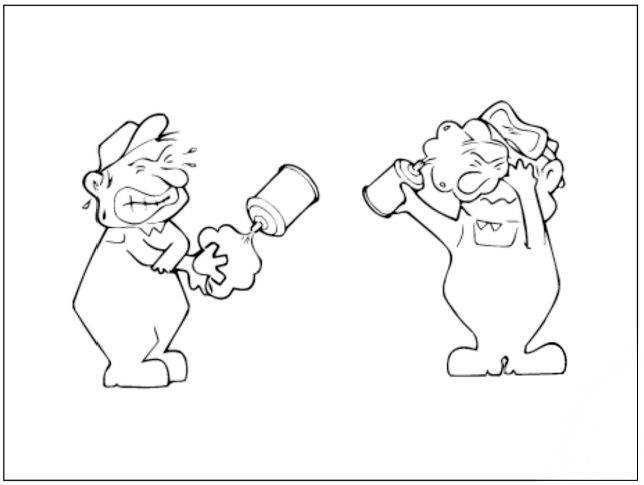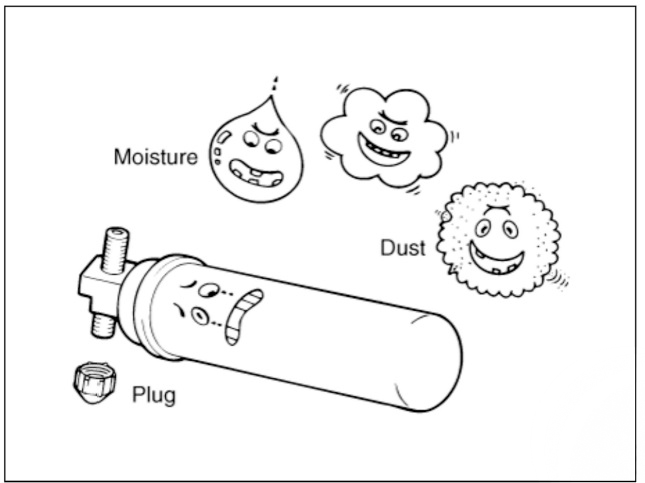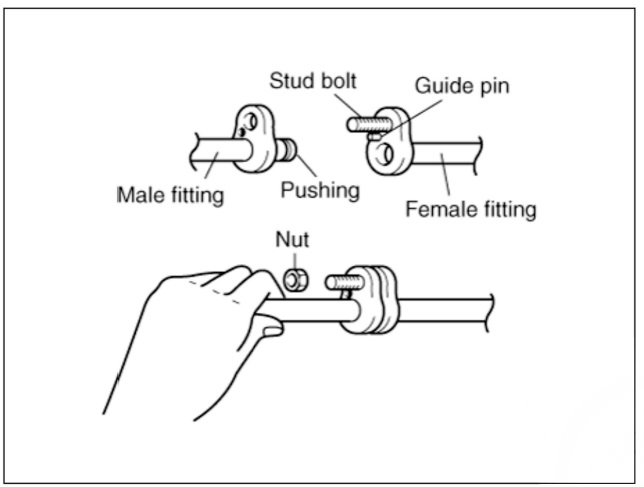Hyundai Tucson: Air Conditioning System - Instructions (R- 134a)
Hyundai Tucson - Fourth generation (NX4) - (2020-2023) - Workshop Manual / Heating, Ventilation and Air Conditioning (HVAC) / Air Conditioning System / Air Conditioning System - Instructions (R- 134a)
When Handling Refrigerant
- R-134a liquid refrigerant is highly volatile. A drop on the skin of your hand could result in localized frostbite. When handling the refrigerant, be sure to wear gloves.
- It is standard practice to wear goggles or glasses to protect your eyes, and gloves to protect your hands. If refrigerant splashes into your eyes, wash them with clean water immediately.
- The R-134a container is highly pressurized. Never leave it in a hot place, and check if storage temperature is below 52ºC (126ºF)
- An electronic leak detector should be used to check the system for refrigerant leakage. Bear in mind that the R-134a, upon coming into contact with flame, produces phosgene, a highly toxic gas.
- Use only recommended lubricant for R-134a systems. If lubricants other than the recommended one used, system failure may occur.
- PAG lubricant absorbs moisture from the atmosphere at a rapid rate, therefore the following precautions must be observed:
- When removing refrigerant components from a vehicle, cap the components immediately to prevent entry of moisture.
- When installing refrigerant components to a vehicle, do not remove the cap until just before connecting the components.
- Complete the connection of all refrigerant tubes and hoses without delay to prevent the A/C system from taking on moisture.
- Use the recommended lubricant from a sealed container only.
- If an accidental discharge in the system occurs, ventilate the work area before resume of service.

When Replacing Parts on A/C System
- Never open or loosen a connection before discharging the system.
- Seal the open fittings of components with a cap or plug immediately to prevent intrusion of moisture or dust.
- Do not remove the sealing caps from a replacement component until it is ready to be installed.
- Before connecting an open fitting, always install a new sealing ring. Coat the fitting and seal with refrigerant oil before making the connection.

When Installing Connecting Parts
Flange With Guide Pin
Check the new O-ring for damage (use only the specified) and lubricate by using compressor oil.
Tighten the nut to the specified torque.

Handling Tubing and Fittings
The internal parts of the refrigeration system will remain in a state of chemical stability as long as pure moisture-free refrigerant and refrigerant oil are used. Abnormal amounts of dirt, moisture or air can upset the chemical stability and cause problems or serious damage.
The Following Precautions Must Be Observed
- When it is necessary to open the refrigeration system, have everything you will need to service the system ready so the system will not be left open any longer than necessary.
- Cap or plug all lines and fittings as soon as they are opened to prevent entrance of dirt and moisture.
- All lines and components in parts stock should be capped or sealed until they are ready to be used.
- Never attempt to rebind formed lines to fit. Use the correct line for the installation you are servicing.
- All tools, including refrigerant dispensing manifold, gauge set manifold and test hoses, should be kept clean and dry.
READ NEXT:
 Air Conditioning System - Instructions (R- 1234yf)
Air Conditioning System - Instructions (R- 1234yf)
WARNING
The R-1234yf liquid refrigerant is a flammable gas. The gas
reduces oxygen available for
breathing and causes asphyxiation in high concentrations. The victim will
not realize that he/she
is suffocating.
Inhalation may cause ce
 Refrigeration Cycle
Refrigeration Cycle
Engine Room
Compressor
Service port (Low pressure)
A/C pressure transducer (APT)
Service port (High pressure)
Suction & Liquid pipe assembly
Expansion valve cover
Interior
Auto defogging sensor
Photo sensor
PM s
 Refrigerant System Service Basics (R- 134a)
Refrigerant System Service Basics (R- 134a)
Refrigerant Recovery
Use only service equipment that is U.L-listed and is certified to meet the
requirements of SAE J2210
to remove HFC-134a(R-134a) from the air conditioning system.
WARNING
Air conditioning refrigerant or lubricant vapor ca
SEE MORE:
 Panorama Sunroof - Installation
Panorama Sunroof - Installation
Installation
WARNING
In order to mount the front glass, use the tools shown in the
following figure :
Tooling Diagram
Sealant nozzle
Adhesive sealant for car windows
Sealant gun
Primer
Primer application brush
Install t
 Rear pillar trim
Rear pillar trim
Component Location
Rear pillar trim
Replacement
WARNING
When removing with a flat-tip screwdriver or remover, wrap
protective tape around the tools to
prevent damage to components.
Put on gloves to prevent hand injuries.
WAR
Information
- Home
- Hyundai Tucson - Fourth generation (NX4) - (2020-2023) - Owner's Manual
- Hyundai Tucson - Fourth generation (NX4) - (2020-2023) - Workshop Manual